
The ZX Spectrum is an 8-bit home computer developed and marketed by Sinclair Research. It was first released in the United Kingdom on 23 April 1982. Many official and unofficial clones were released around the world in the following years, most notably in Europe, the United States, and Eastern Bloc countries.
Miner Willy is the protagonist in a series of platform games for the ZX Spectrum, MSX, Amstrad CPC and the Commodore 64 home computers. The first two games - Manic Miner and Jet Set Willy were written by Matthew Smith during the early 1980s.
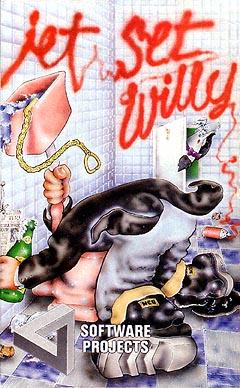
Jet Set Willy is a platform video game originally written by Matthew Smith for the ZX Spectrum home computer. It was published in 1984 by Software Projects and ported to most home computers of the time.

Miner 2049er is a platform game developed for the Atari 8-bit family of home computers by Bill Hogue and released by his company, Big Five Software, in 1982. The player controls Bounty Bob through multiple levels of a mine, with the goal of traversing all of the platforms while avoiding or defeating enemy mutants. At a time when "climbing games" such as Donkey Kong had four screens, Miner 2049er had ten.
1983 has seen many sequels and prequels in video games, such as Mario Bros. and Pole Position II, along with new titles such as Astron Belt, Champion Baseball, Dragon's Lair, Elevator Action, Spy Hunter and Track & Field. Major events include the video game crash of 1983 in North America, and the third generation of video game consoles beginning with the launch of Nintendo's Family Computer (Famicom) and Sega's SG-1000 in Japan. The year's highest-grossing video game was Namco's arcade game Pole Position, while the year's best-selling home system was Nintendo's Game & Watch for the third time since 1980.
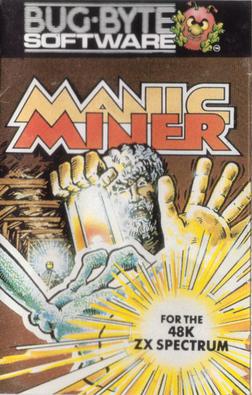
Manic Miner is a platform game written for the ZX Spectrum by Matthew Smith. It was published by Bug-Byte in 1983, then later the same year by Software Projects. The first game in the Miner Willy series, the design was inspired by Miner 2049er (1982) for the Atari 8-bit family. Retro Gamer called Manic Miner one of the most influential platform games of all time, and it has been ported to numerous home computers, video game consoles, and mobile phones.

Matthew Smith is a British computer game programmer. He created the games Manic Miner and Jet Set Willy for the ZX Spectrum, released in 1983 and 1984 respectively. Smith left the games industry in 1988 and later moved to the Netherlands. He has since returned to the UK and has worked on some games as well as appearing at conventions and in documentaries.

The Horace video game series was created in the 1980s by William Tang for Beam Software. The series comprised Hungry Horace, Horace Goes Skiing and Horace and the Spiders.
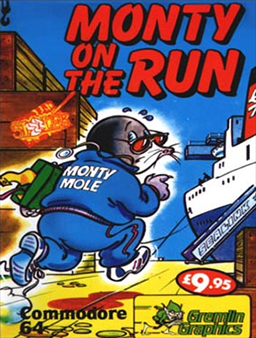
Monty on the Run is a computer game created by the software house Gremlin Graphics and released in 1985 for the Commodore 64, ZX Spectrum, Amstrad CPC and Commodore 16, written by Peter Harrap for the ZX Spectrum with the iconic in-game music on the Commodore 64 provided by Rob Hubbard. It is the third game in the Monty Mole series.

Jet Set Willy II: The Final Frontier is a platform game released 1985 by Software Projects as the Amstrad CPC port of Jet Set Willy. It was then rebranded as the sequel and ported other home computers. Jet Set Willy II was developed by Derrick P. Rowson and Steve Wetherill rather than Jet Set Willy programmer Matthew Smith and is an expansion of the original game, rather than an entirely new one.

Bug-Byte Software Ltd. was a video game company founded in 1980 in Liverpool, initially producing software for the Acorn Atom and ZX80. Bug-Byte's first hit was Don Priestley's Mazogs which was one of the most successful titles for the ZX81. In 1983, it published Manic Miner, considered to be one of the most influential platform games of all time. The company went into liquidation in 1985 but their name and logo were purchased by Argus Press PLC for use as a budget software label.
The ZX Spectrum's software library was very diverse. While the majority of the software produced for the system was video games, others included programming language implementations, Sinclair BASIC extensions, databases, word processors, spread sheets, drawing and painting tools, and 3D modelling tools.

Styx is a maze shoot 'em up game published by Bug-Byte Software in 1983. It was the first ZX Spectrum game written by Matthew Smith, and the first of his three-game contract with the company. He went on to write Manic Miner in the same year.
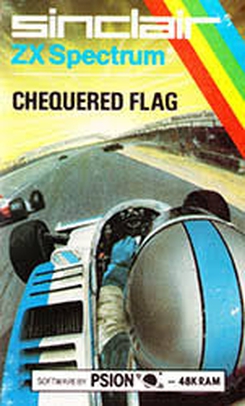
Chequered Flag is a racing video game developed by Psion Software and published by Sinclair Research in 1983. It was the first driving game published for the ZX Spectrum and one of the first computer car simulators.

Escape from Singe's Castle, also known as Dragon's Lair Part II - Escape From Singe's Castle, is a computer game for the Amstrad CPC, Commodore 64 and ZX Spectrum home computers, released by Software Projects in 1987.

Bugaboo (The Flea), later published in Spain as La Pulga, is a video game written by the Spanish programming duo Paco Portalo and Paco Suarez for the ZX Spectrum and published by Quicksilva in 1983. It was later released for the Commodore 64 and MSX were produced. The Amstrad CPC port was published under the name Roland in the Caves using the Roland character.
Dragon's Lair is a video game franchise created by Rick Dyer. The series is famous for its Western animation-style graphics and complex decades-long history of being ported to many platforms and being remade into television and comic book series.
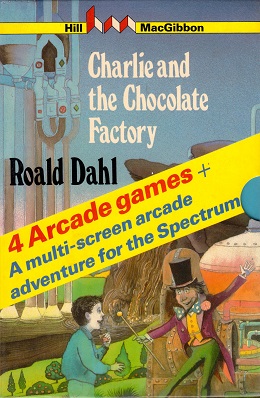
Charlie and the Chocolate Factory is a 1985 video game developed by British studio Soft Option and published by Hill MacGibbon. It was released in the United Kingdom for the ZX Spectrum. It is loosely based on Roald Dahl's 1964 book of the same name, and consumers had the option of buying the game and book as a set.














